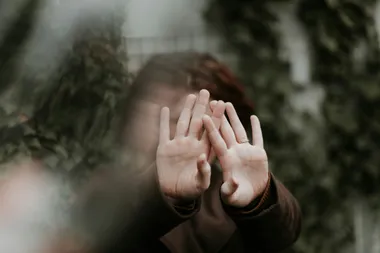
It began with a book. About betrayal.
As research for an essay series I am working on, I sit reading a book written by a young woman who was manipulated, and in my opinion, taken advantage of by a Godman. Tears roll unchecked down my cheeks.
Halfway through, I close the pages and weep.
Tears for her pain, for the desecration of trust.
And also for the realization that what I was feeling—incandescent anger—was the opposite of the samatvam, the evenness of mind, I have written about and aspire permanently to.
In that moment I saw two things clearly.
First, the outrage was not just moral; it was personal. Her story stirred every instinct in me that rejects exploitation disguised as spirituality.
Second, I was nowhere near the equanimity I aspire to.
It wasn’t a theoretical failure; it was a mirror.
And so, with the help of a wise friend, I began to craft a small daily practice—a way to meet the fire without being consumed by it.
I share it here in case it helps anyone else standing in the space between fury and clarity.
Practice: A Daily Reflection for Cultivating Equanimity (Samatvam)
1 · Stillness (≈ 5 minutes)
Sit comfortably, spine tall, eyes gently closed. Let the breath settle into its natural rhythm.
No attempt to control—just witness.
When thoughts arise, label them gently: thought, memory, anger, sorrow.
You’re not suppressing them, only acknowledging: This too is moving within awareness.
Gītā 6.20 — “When the mind, restrained by practice, rests in the Self alone—then one is established in yoga.”
2 · The Mirror Question (≈ 2–5 minutes)
Ask inwardly:
“What is this emotion protecting?”
If it’s anger, perhaps it guards a value—justice, compassion, truth.
If it’s grief, it may guard love.
Recognize the sacred impulse beneath the turbulence.
Say quietly: This fire exists because something precious matters.
Yoga Vāsiṣṭha — “The waves reveal the depth of the sea; they are not apart from it.”
3 · Disidentification (≈ 3–5 minutes)
Visualize the emotion as weather moving through a vast sky.
You are the sky, not the storm.
Whisper internally: This too arises in consciousness and will pass through it.
If strong sensations persist, place a hand on your heart and repeat slowly:
“I allow this feeling to complete its circuit.”
This isn’t denial—it’s containment with awareness.
4 · Optional Journaling (≈ 5 minutes)
Write briefly under three headings:
- Truth: What do I see clearly today that I could not see yesterday?
- Compassion: Can I hold others’ delusion without condoning it?
- Action: What is one thing I can do from steadiness, not reactivity?
Even a single sentence under each heading is enough.
Gītā 2.50 — “He whose intellect is even, whose mind is steady, is established in yoga; he acts, yet is not bound by his actions.”
A note: The references to the Indian classics are philosophical, not religious. I have little patience for dogma. I debated taking out the Sanskrit but left it in for those who wish to explore further.
What the Practice has begun to Reveal
At first, it felt mechanical—a ritual of labeling and breathing.
But gradually, something softened. I began to see that anger isn’t the enemy of equanimity; unexamined anger is.
Each time I sat with the heat instead of suppressing it, I found its root was not hatred but care—a visceral response to the desecration of trust.
Of another human's pain, inflicted by the lust of a so-called "enlightened" being. A guru.
And beneath that, a deeper recognition: the same consciousness that illumines peace also illuminates rage.
The task isn’t to extinguish one to keep the other; it’s to see both in the same light.
Fire and Stillness
Equanimity (Samatvam) isn’t achieved by cooling the heart until nothing burns.
It’s forged by holding the flame steadily—by neither idolizing nor fearing it.
Fire without stillness destroys; Śakti unbound.
Stillness without fire deadens; Inert Consciousness.
The Dance requires both.
The craft of equanimity lies in learning to contain the blaze without losing the light.
If you find yourself burning with anger or sorrow today, perhaps this simple reflection can help.
Sit.
Witness.
Listen to what the fire is trying to teach before you let it go.
Your Turn
If any of this resonates, try the practice for a few days.
You don’t need incense, mantras, or perfect posture—just honesty.
Notice what burns in you most fiercely right now.Ask what value that fire is guarding.
Sit with it, breathe with it, and let awareness do the work. Let the silence show you.
You may find that equanimity isn’t the absence of passion, but the space in which passion becomes clarity.
If you do try this reflection, I’d love to hear what you discover.
What the fire revealed, what the stillness offered, and how the two may have begun to dance within you.
If you’re willing, please share your reflections—publicly in the comments or privately at undoing_raaj (at) proton (dot) me.
With quiet thanks to David Trinks on Unsplash for the image.


